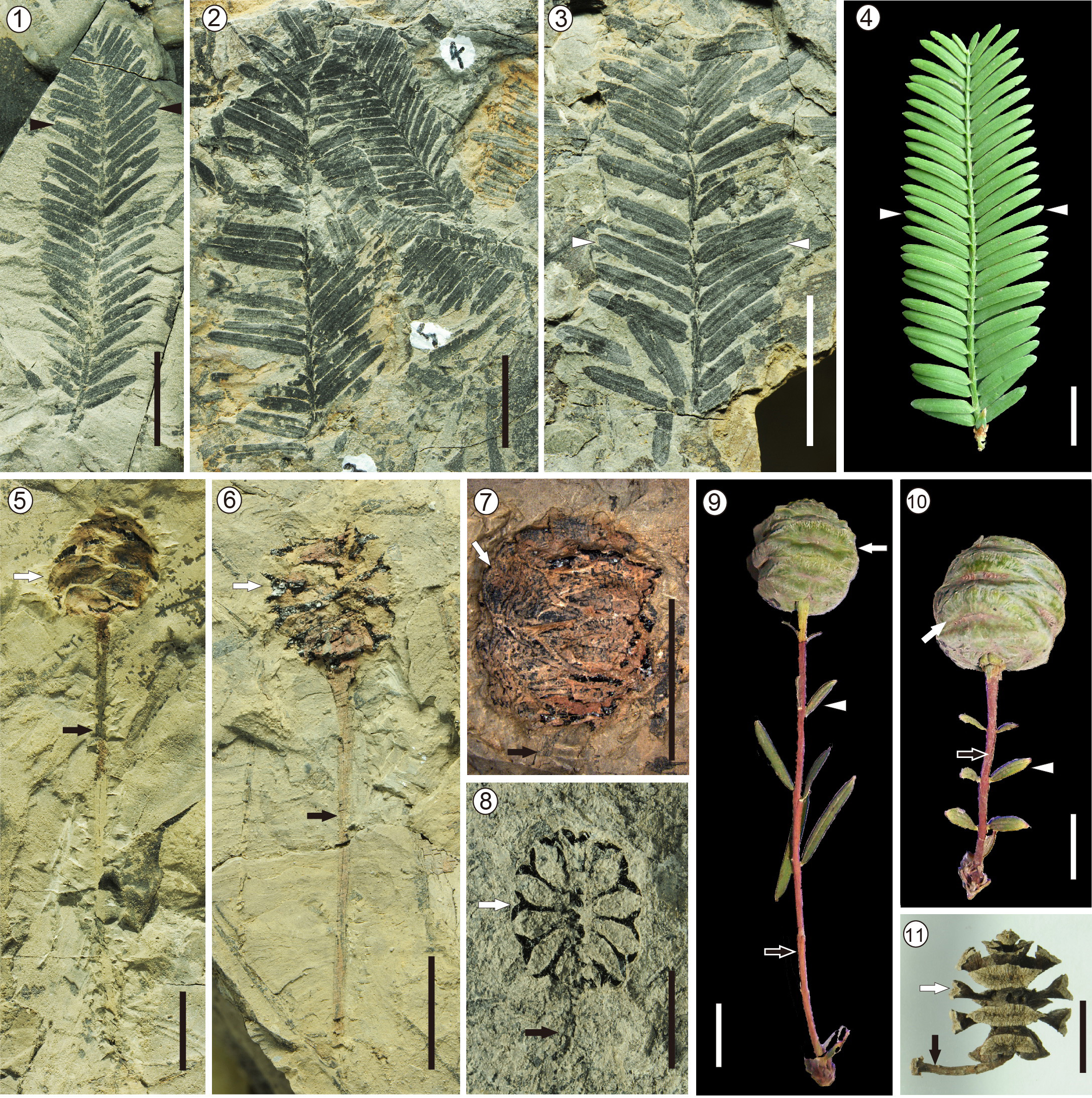Metasequoia glyptostroboides (dawn redwood) is my favorite plant. Our first meeting was in a primary school textbook. The green, feather-like, leafy shoots were displayed against the clear water of a lake. It looked so fresh and light, and quickly attracted my attention. At that time I knew its name was Shui-Shan (水杉, meaning “water fir” in Chinese). When I became an undergraduate student at Sichuan University in Chengdu, China in 1999, I first saw real Metasequoia trees. They grow in front of the teaching building, a great example of Chinese traditional architecture, and they create a peaceful environment for study.

I became a PhD student of Nanjing Institute of Geology and Palaeontology, Chinese Academy of Sciences (CAS) in 2006, and did my Metasequoia research with Professor Qin Leng. She is a Metasequoia specialist and cooperates with Dr. Hong Yang from Bryant University. They collected many Metasequoia fossils around the world, from the Canadian Arctic to Japan and from the Palaeocene to Pleistocene. Through these excellently preserved fossils I could travel deep into the ancient ages. I was fascinated by the evolution of their leaf morphology and the immense beauty of their micro-morphology. In order to compare the leaf morphologies of the fossils and living trees, I climbed two Metasequoia trees to the top to collect samples. When I observed them under the microscope, I found exciting morphologies similar to the fossils. I also found a method to prepare the brittle cuticle of the fossil leaves. In 2010, at the Third International Metasequoia Symposium in Osaka, Japan, I visited the Osaka Museum of Natural History and was lucky to see Dr. Shigeru Miki’s slices of Metasequoia fossils. These proved useful in finishing my PhD thesis: “Morphology and anatomy of Metasequoia leaves and their environmental significance: evidence from comparative studies of fossils and “living fossil.”
In the spring of 2011, I received an exciting email from Professor Dr. Zhe-kun Zhou, a botanist and palaeobotanist at the Xishuangbanna Tropical Botanical Garden, CAS. His paleoecology group found Metasequoia-like leafy shoots in central Yunnan: a great find! So I went to Yunnan, and became a post-doctoral fellow under his direction. After numerous excavations at the field outcrop, I opened a siltstone and a very beautiful female cone appeared. Joyfully, I immediately called Prof. Zhou with my belief that the fossil was actually Metasequoia! At last we found evidence that the intensification of Asian monsoons caused Metasequoia’s disappearance from Yunnan. Now it grows naturally only in the narrow boundary of Hubei, Chongqing, and Hunan Provinces in Central China, where the monsoon season is weaker and precipitation in spring is greater than in central Yunnan.

When I visited the Metasequoia population in Lichuan City, Hubei in late autumn 2018, I preferred going through the smaller paths in the forest, which were covered in thick “snows”—the fallen leafy shoots of the dawn redwood. I was astonished by the great quantity of leaves produced and sent drifting back to earth every year! When you look at the distant mountains, you see such beautiful scenery—standing out against the green background are coppery red Metasequoia trees growing towards the blue sky. Here is a pure land on Earth.
I am lucky for having the chance to conduct research at the Arnold Arboretum of Harvard University, and design interesting morphological and physiological experiments. Here I see my good old friends again: the earliest living Metasequoia trees to be planted outside of their native valleys in China. Along the Chinese Path in the Explorers Garden is a small Metasequoia grove. It looks so similar to the Metasequoia path in Guihua Village, Lichuan City, which gives me such strong feelings of nostalgia. Growing in the front of the Hunnewell Visitor Center, Metasequoia trees have become landmarks of the Arnold Arboretum. Every morning when I look at them, I am encouraged by their grand and elegant appearance. They welcome everyone coming to the Arnold Arboretum, and symbolize discovery and the Arboretum’s role in sharing the beauty and wonder of nature.

Li Wang, PhD, is a visiting researcher, part of a program with the Chinese Union of Botanical Gardens that brings scholars annually to the Arnold Arboretum. Li’s research at the Arboretum is supported by the Chinese Union of Botanical Gardens, Xishuangbanna Tropical Botanical Garden (XTBG) and its Herbarium, and the Chinese Academy of Sciences (CAS).
From “free” to “friend”…
Established in 1911 as the Bulletin of Popular Information, Arnoldia has long been a definitive forum for conversations about temperate woody plants and their landscapes. In 2022, we rolled out a new vision for the magazine as a vigorous forum for tales of plant exploration, behind-the-scenes glimpses of botanical research, and deep dives into the history of gardens, landscapes, and science. The new Arnoldia includes poetry, visual art, and literary essays, following the human imagination wherever it entangles with trees.
It takes resources to gather and nurture these new voices, and we depend on the support of our member-subscribers to make it possible. But membership means more: by becoming a member of the Arnold Arboretum, you help to keep our collection vibrant and our research and educational mission active. Through the pages of Arnoldia, you can take part in the life of this free-to-all landscape whether you live next door or an ocean away.
